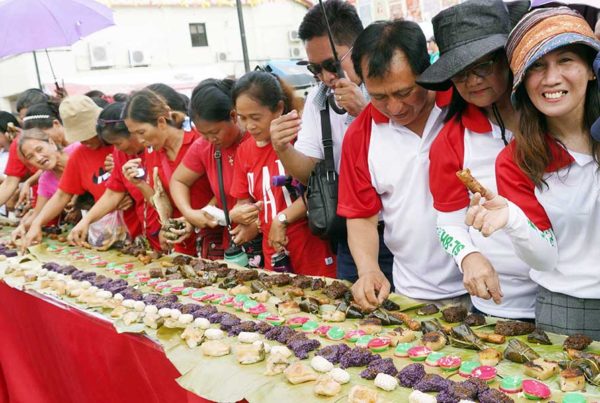Sea cucumber takes centerstage
SEA cucumber, a high-value food considered as among “the emperor’s food”, was the focus of a three-day forum aimed at saving this endangered marine product and boosting its production.
Dr. Westly Rosario, interim executive director of the National Fisheries Research and Development Institute and center chief of the Bureau of Fisheries and Aquatic Resources (BFAR) in Bonuan Binloc in Dagupan City, recently organized stakeholders of sea cucumber throughout the country for the first- ever three- day national forum on sea cucumber fisheries management here last Thursday to establish a benchmark or baseline information on sea cucumber fisheries in the Philippines.
The Philippines currently ranks second among exporters in the world, but sea cucumber is at risk of being depleted due to overexploitation.
Citing urgency of involvement of stakeholders, Rosario warned that it’s natural population in the Philippines and throughout the geographic range is on the verge of collapse.
During initial discussions at the forum, it was determined that there are no restrictions on the size of sea cucumber harvested.
“We need to address this problem to make it sustainable to the people who depend on it,” he said.
Sea cucumbers abound in Bolinao town, in Pangasinan, Ilocos, Zambales, and Palawan, among other rocky and sandy areas.
There are about a hundred known species of sea cucumbers in the Philippines, 25 of which are har vested commercially, according to Ruth Gamboa of the University of the Philippines-Mindanao.
Sea cucumbers command a good price of at least P200 per kilogram to as high as P1,500. per kilogram. She said it is locally known as ba or balat.
She said based on recent records, export production reached a peak of 3,499 tons worth about US$3 million in 1985 and was followed by a drastic drop to almost half in the succeeding year.
The product on the shelf comes in the form of chilled, ready-to-cook slices in styropacks or smoked.
The sea cucumber, which is the country’s fourth priority fishery commodity ranks eighth among the top fishery exports, forms a multi-million dollar industry.
However, due to the continuous high demand and price of sea cucumber products in the world market, particularly in China and Indonesia, and the recent discovery of medical, pharmaceutical and other commercial applications, the lack of fishery and trade management and current socio-economic and governance conditions, the natural populations are now threatened by over-exploitation.
The forum was attended by representatives from the academe, local government units, public organizations, traders, non-government associations, and the World Fish Center across the country where they discussed sea cucumber and its ecological status as well as management initiatives, post-harvest, marketing and trade, sharing of local experiences and les sons, and farming, among others.
FIRST HATCHERY
Meanwhile, the BFAR center here is putting up the first commercial sea cucumber hatchery in the country.
This will augment the experimental growing of sea cucumber at the University of the Philippines Marine Science Institute (UPMSI) in Bolinao town, Pangasinan.
He said the BFAR hatchery here forged a tie up with the World Fish Center, Australian Centre for International Agricultural Research and UPMSI BFAR’s hatchery has a capacity of 50,000 juveniles a year. Later, sea ranching will be adopted for a certain period before harvest.
Rosario said “sea cucumber is a good candidate for sea ranching because it moves slowly, about one to two meters a day only”.
Sea ranching of sandfish (Holothuria scabra), the most common among the sea cucumber species, will be undertaken in three sites in Bolinao and restocking in the Philippines will occur in existing Marine Reserves in the Hundred Islands National Park in Alaminos City with the help of UPMSI and UP Mindanao that will mentor the communities to safeguard sandfish within their managed areas for trials.—EVA
Share your Comments or Reactions
Powered by Facebook Comments









